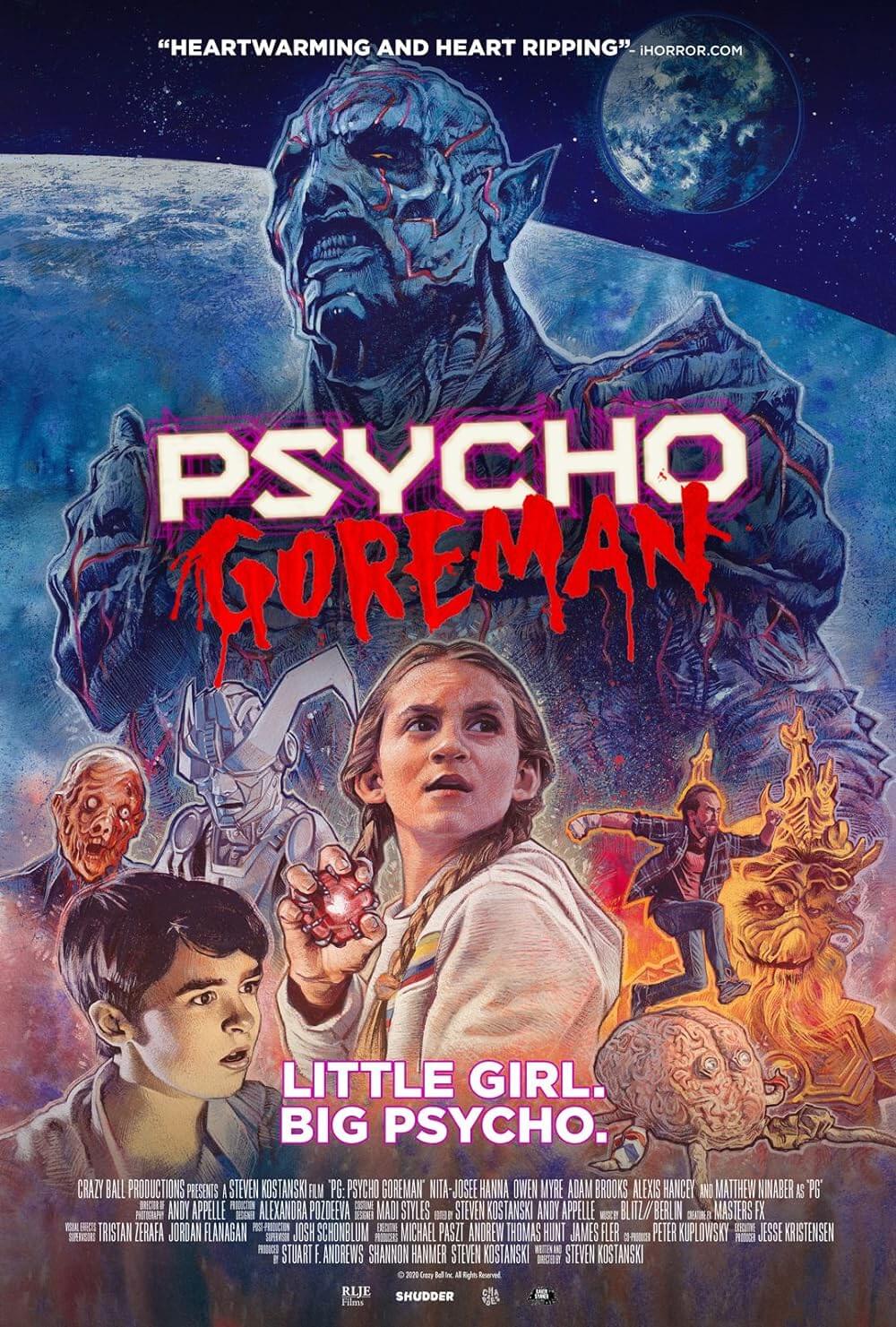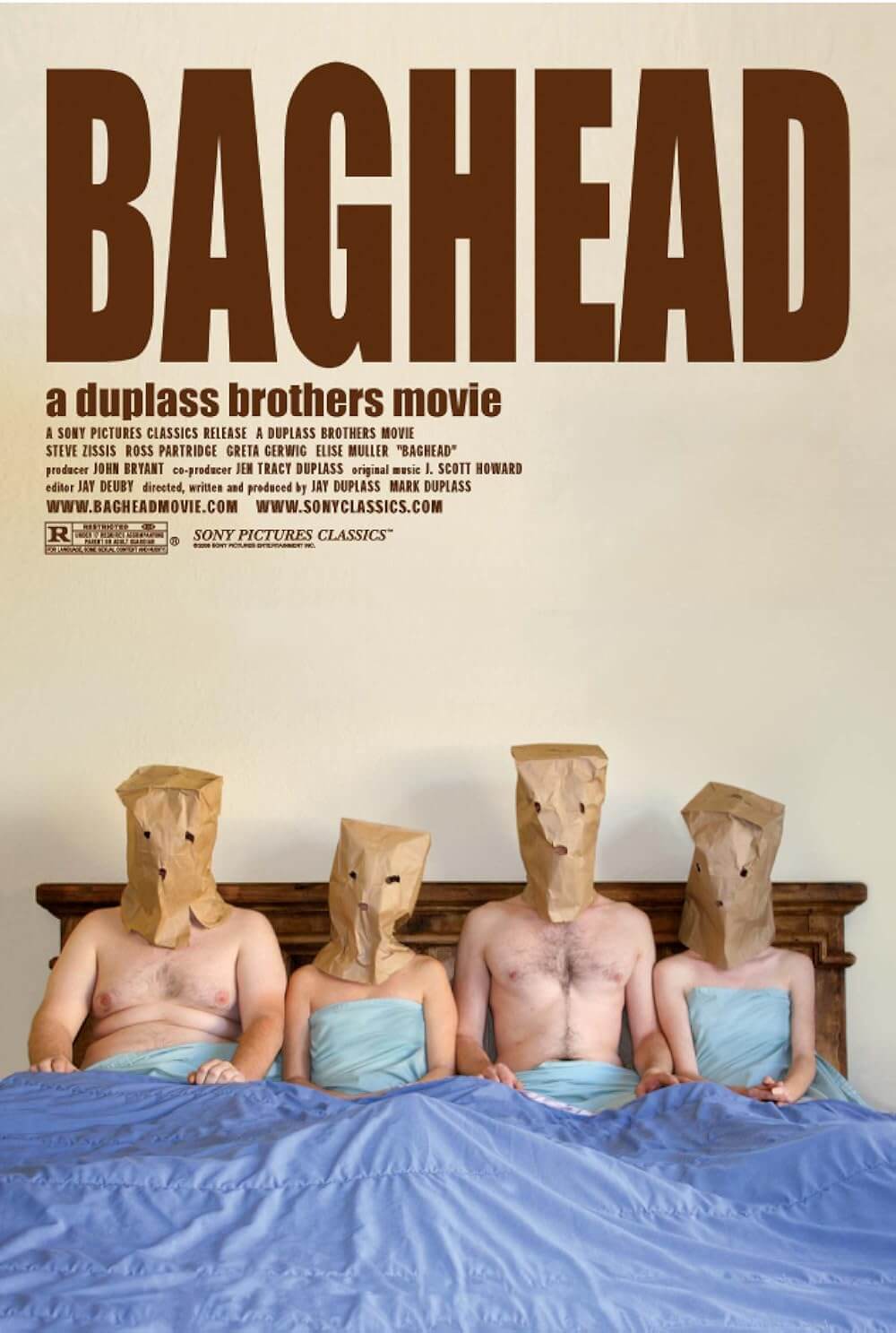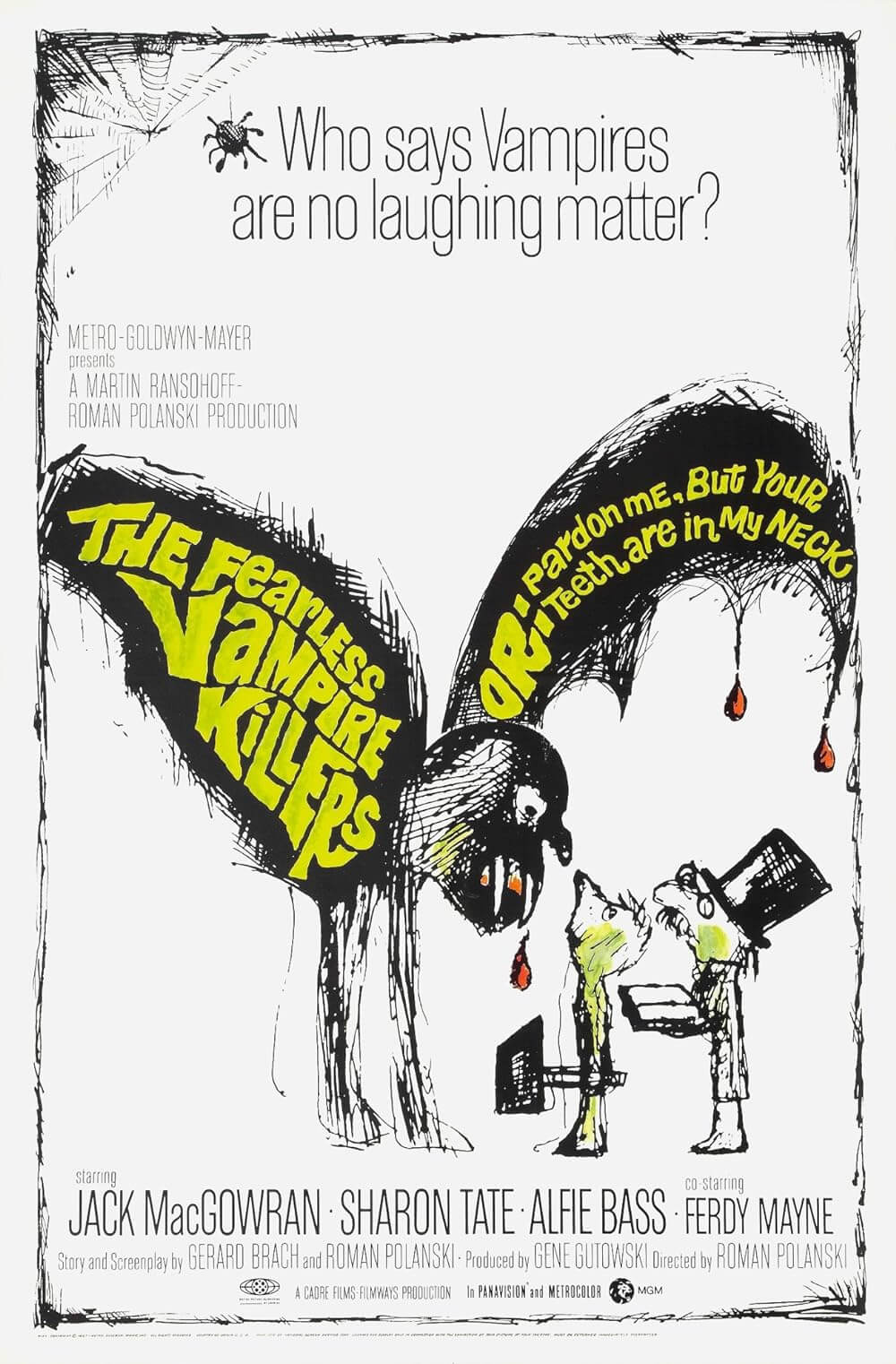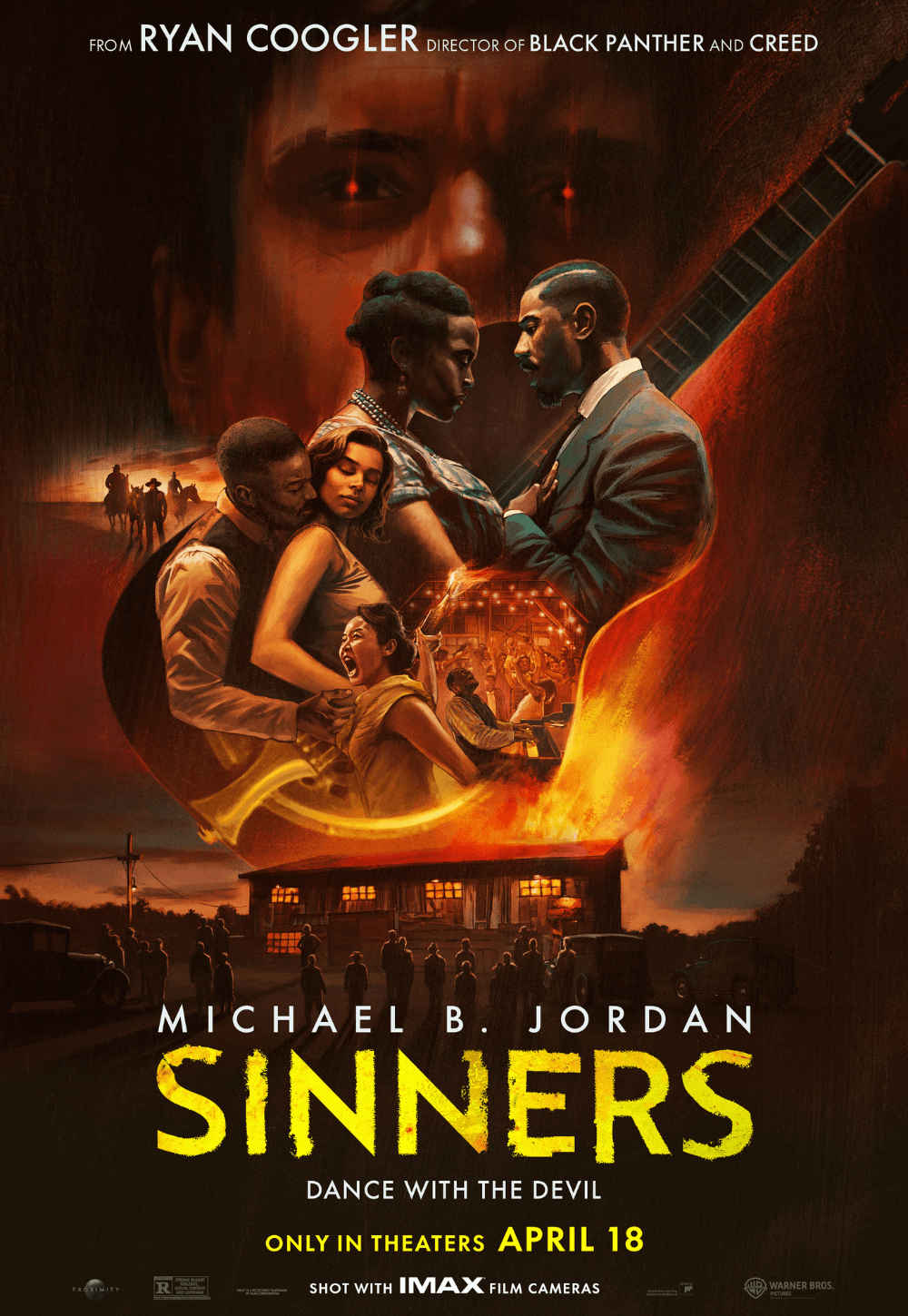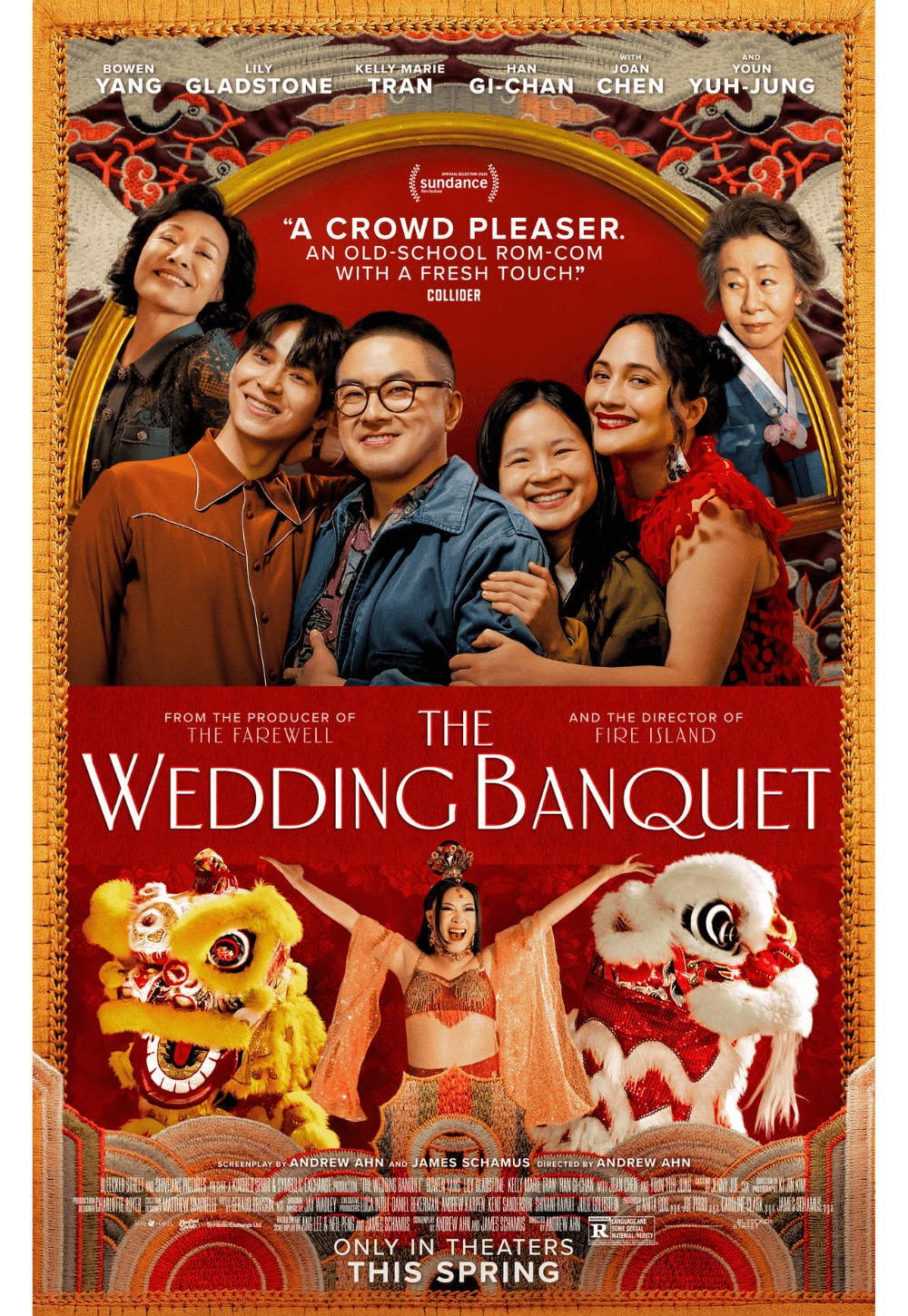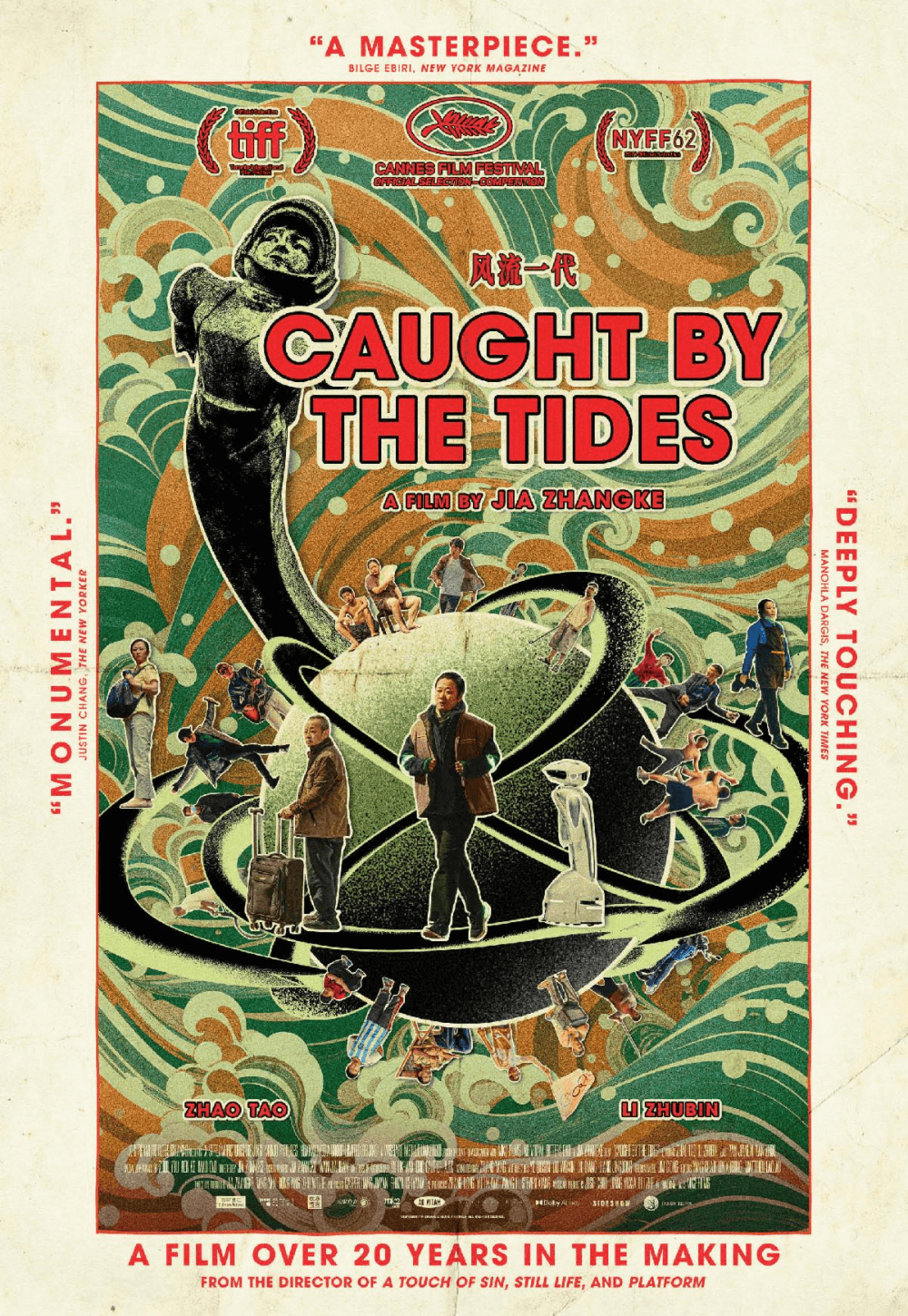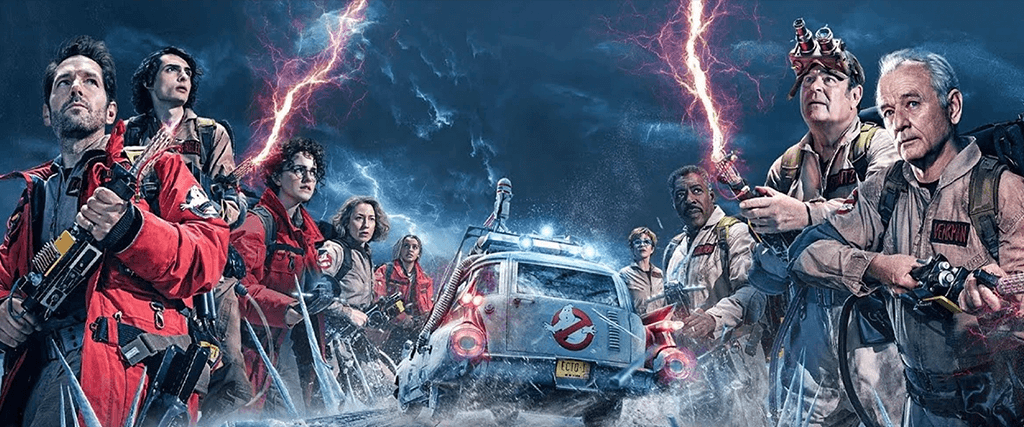
Ghostbusters: Frozen Empire
By Brian Eggert |
The Ghostbusters franchise has a problem with telling new stories. Since the original debuted in 1984 and became an unexpected sensation, the three sequels, a disappointing 2016 reboot, cartoon series, and other related products have tried to recapture its magic. None have succeeded. The closest any have come is the 1989 sequel, which suffers from a mild case of sequelitis, and even those involved called it a disappointment, leading to a 32-year gap between Ghostbusters II and its proper sequel, 2021’s Ghostbusters: Afterlife. The latter attempted to revitalize the material by introducing a new cast in a different setting. However, the same story beats and an overreliance on callbacks rendered Afterlife too familiar to celebrate as something new. Ghostbusters: Frozen Empire suffers from a similar problem. Its incessant need to remind audiences about what they loved about the original makes the result cloyingly repetitive, dependent on “remember when” moments meant to evoke nostalgia and goodwill. But every subsequent installment after the original has been winking at the past instead of moving the series forward. And it’s tiresome.
If Afterlife felt like a carbon copy of the 1984 movie for a new generation, with an abundance of scenes for those committed to the original, then Frozen Empire makes a broader appeal to the young and old. In that sense, you can feel the corporate influence on the script, overseen by Ghost Corps, a production company launched by Columbia Pictures to manage the Ghostbusters brand. No doubt, after much audience analysis in the wake of the 2021 legacy sequel, the company resolved they needed to better integrate the original cast with the new one, ensuring full market saturation and four-quadrant coverage. However, writers Gil Kenan and Jason Reitman struggle to balance out the cast, which includes no fewer than ten Ghostbusters and several others helping them. With so many characters, none get more than superficial attention in a story that, once again, resembles the original to annoying degrees. Worse, Frozen Empire isn’t memorably funny or exciting, which seems like table stakes for a Ghostbusters movie.
The sequel starts promisingly enough, with Robert Frost’s poem “Fire and Ice” setting the elemental theme that prevails throughout. Then, a 1904 prologue in New York establishes the resident villain with chanting on a phonograph, frozen adventurers, and a mysterious figure dressed in brass armor. Cut to the present, with the new Ghostbusters resituated from Oklahoma to New York, chasing what looks like a prehistoric flying fish on busy city streets. This “Hell’s Kitchen Sewer Dragon” begs the question, is the creature a ghost or something else? Do the Ghostbusters actually catch ghosts, or do they catch monsters too? Regardless, armed with ghost traps mounted on remote-controlled cars and drones, our heroes have updated their gear. The story involves a mysterious and ancient brass ball, inside of which is a defeated ice god from Mesopotamian protohistory that frightens other ghosts and intends to take revenge on humanity. An expository lesson at the New York Public Library, conducted by Patton Oswalt and delivered in a neat animated style approximating relief sculptures, doles out this information.
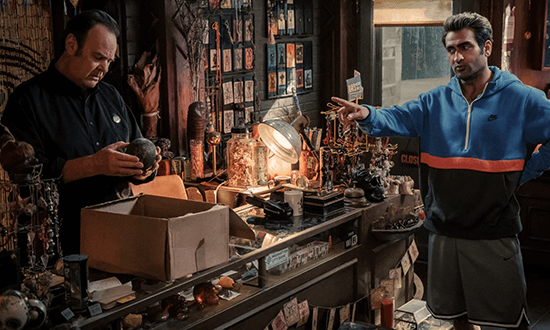 But the threat feels like an afterthought, lost amid Frozen Empire’s myriad characters and subplots. Callie Spengler (Carrie Coon, underutilized and stuck in mom mode) and Gary (Paul Rudd) have taken to full-time Ghostbusting. Callie’s son Trevor (Finn Wolfhard), now 18, wants more responsibility. Central to the story is Phoebe (Mckenna Grace), the youngest Spengler who grapples with being too young to be a Ghostbuster, and she finds solace in a chess-playing ghost (Emily Alyn Lind) with ulterior motives. Unmemorable characters from Afterlife, such as Podcast (Logan Kim) and Lucky (Celeste O’Connor), return to take up space. The old guard returns, too. Ray Stantz (Dan Aykroyd) has a more significant role this time, investigating the brass ball’s origins with its former owner, Nadeem (Kumail Nanjiani). Winston Zeddemore (Ernie Hudson) has become a philanthropist, funneling his wealth into a paranormal think tank run by the sciencey Lars (James Acaster). Peter Venkman (Bill Murray) shows up for a few throwaway scenes, as does Janine Melnitz (Annie Potts).
But the threat feels like an afterthought, lost amid Frozen Empire’s myriad characters and subplots. Callie Spengler (Carrie Coon, underutilized and stuck in mom mode) and Gary (Paul Rudd) have taken to full-time Ghostbusting. Callie’s son Trevor (Finn Wolfhard), now 18, wants more responsibility. Central to the story is Phoebe (Mckenna Grace), the youngest Spengler who grapples with being too young to be a Ghostbuster, and she finds solace in a chess-playing ghost (Emily Alyn Lind) with ulterior motives. Unmemorable characters from Afterlife, such as Podcast (Logan Kim) and Lucky (Celeste O’Connor), return to take up space. The old guard returns, too. Ray Stantz (Dan Aykroyd) has a more significant role this time, investigating the brass ball’s origins with its former owner, Nadeem (Kumail Nanjiani). Winston Zeddemore (Ernie Hudson) has become a philanthropist, funneling his wealth into a paranormal think tank run by the sciencey Lars (James Acaster). Peter Venkman (Bill Murray) shows up for a few throwaway scenes, as does Janine Melnitz (Annie Potts).
Director Kenan and his editors struggle to maintain a grip on their many characters. Their sheer numbers overcomplicate an otherwise simple plot, which draws its structure from the original and deploys as many references and Easter eggs as Afterlife. With the threat of another Sumerian “phantom god” looming, one character must become a “Firemaster,” an alternative to a “Keymaster,” I suppose. Also from the first film, there’s another overstuffed containment unit that inevitably bursts and releases a supernatural stream of ghosts into the sky; another gang of Stay Puft marshmallow men; and another encounter with the contentious Walter Peck (William Atherton), now the mayor. For reasons not worth getting into, Peck confiscates the Ghostbusters’ proton packs, which should’ve presented some problems for our heroes. Instead, Lars shows up with a van full of new proton packs in an all-too-convenient and wholly random development. Elsewhere, the filmmakers wisely got rid of the lame Muncher from Afterlife and brought back the original binge-eating specter, Slimer.
Doubtlessly, a large portion of the $100 million budget was spent on the ensemble, leaving the filmmaking underfunded. Indeed, Frozen Empire is another example of a Hollywood movie in which the CGI looks worse than, say, a production ten or so years ago might have. Take the effects used to render Melody, the fiery ghost with whom Phoebe connects, and how they look beneath the standards of a contemporary tentpole. Moreover, the subplot is odd, with the ghost and Phoebe having down-to-earth conversations, which include Melody encouraging Phoebe to explore her interest in the spiritual plane. Since when did this series’ ghosts have walk-and-talks with the living? Other effects fare better, such as Slimer, the amusingly self-destructive marshmallow men, or the various creepy specimens in Winston’s lab. However, the climactic encounter is underwhelming, looks shoddy, and ends without much effort.
Despite the tone of this review, there’s nothing offensively wrong with Frozen Empire, apart from its laziness. Similar to most Hollywood remakes and sequels these days, it’s competent enough to be considered passable. In fact, the audience at my prescreening seemed to enjoy the movie and even applauded when the credits rolled. Yes, there’s plenty to appreciate here, from seeing the original cast back in their element to watching Rudd do his lovable goofball routine. But the movie has too many characters and too few new ideas, and it’s more concerned with cramming mass appeal into the picture than telling a good story. Instead of trying to please everyone, the filmmakers might’ve better served the material and their audience by doing more with less. This franchise’s persistent banality and creatively bereft quality have left me thoroughly uninterested—a shame, considering the original is an enduring favorite.
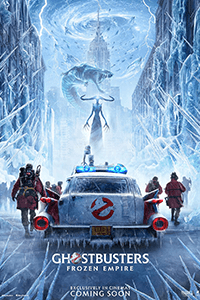
Consider Supporting Deep Focus Review
I hope you’re enjoying the independent film criticism on Deep Focus Review. Whether you’re a regular reader or just occasionally stop by, please consider supporting Deep Focus Review on Patreon or making a donation. Since 2007, my critical analysis and in-depth reviews have been free from outside influence. Becoming a Patron gives you access to exclusive reviews and essays before anyone else, and you’ll also be a member of a vibrant community of movie lovers. Plus, your contributions help me maintain the site, access research materials, and ensure Deep Focus Review keeps going strong.
If you enjoy my work, please consider joining me on Patreon or showing your support in other ways.
Thank you for your readership!
Brian Eggert | Critic, Founder
Deep Focus Review


